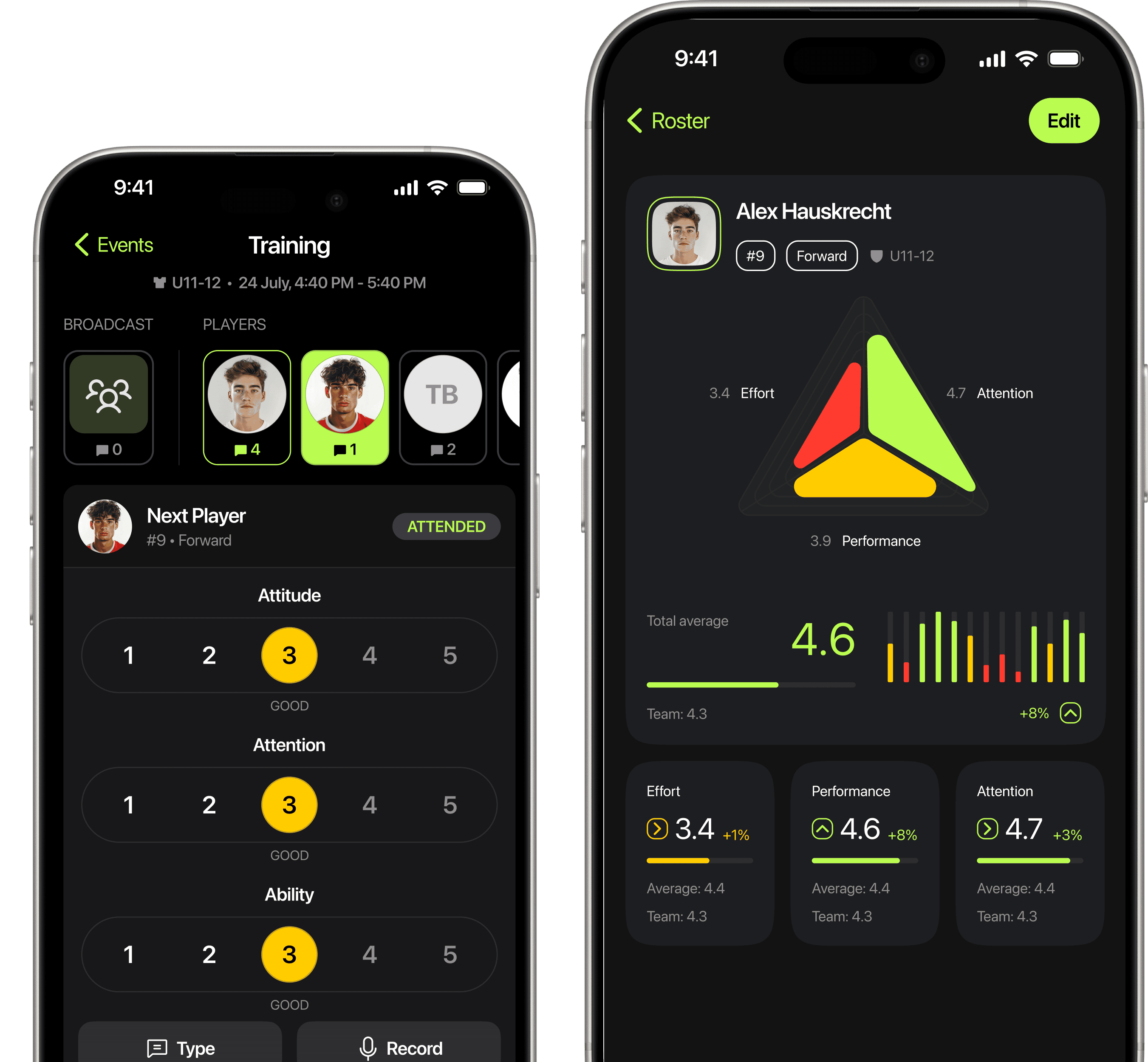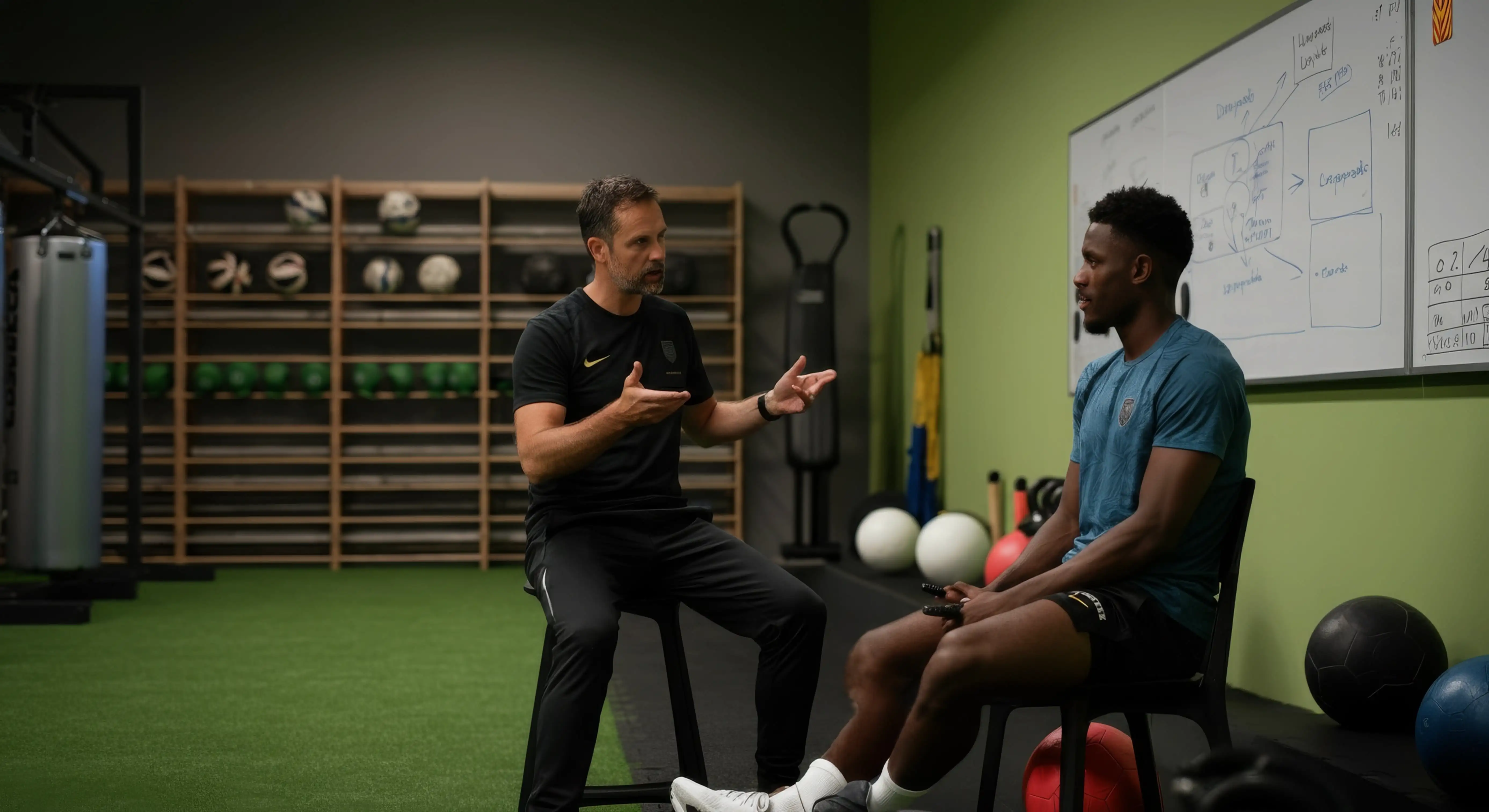Individual development plans (IDP) for coaches
Build clear, trackable Individual Development Plans (IDP) for every athlete—without spreadsheets or scattered notes. PlayerUp keeps goals, feedback, and progress in one place alongside your sessions and communication.

An Individual Development Plan is a living roadmap for each athlete—3–5 priority goals, ongoing feedback, and visible progress across a season. In PlayerUp, IDPs connect directly to practice plans, post-session notes, and player profiles so they actually get used.

Why choose IDPs for athlete development
Coaches use Individual Development Plans (IDPs) to make player growth visible, accountable, and actionable—without losing time to scattered notes or spreadsheets.
Personalized growth
Target technical, tactical, physical, and mental goals tailored to each athlete.
Clear accountability
Coach and player align on goals, checkpoints, and timelines that stick.
Visible progress
Ratings, notes, and clips track measurable improvement week to week.
Player buy-in
Athletes take ownership when their plan is transparent and easy to update.
What’s inside an individual development plan
Profile & strengths
Outline each athlete’s role, key abilities, and priority growth areas.
Goals & targets
Define measurable short- and long-term objectives for development.
Coach feedback
Capture actionable insights linked directly to training and performance.
Progress tracking
Monitor ratings, stats, and reflections to visualize growth over time.
Review & adjustments
Schedule check-ins to refine goals and keep the plan up to date.
Clear, actionable development plans made easy
Centralized notes
Capture feedback instantly after practices and games, all in one place.
Goal setting
Define short- and long-term goals, trackable and transparent for athletes.
Progress insights
Visualize player growth with ratings, metrics, and performance trends.
Centralized notes
Ongoing dialogue with athletes for accountability and engagement.
We're here to answer all your questions.
Here's a little more about how we operate. Got a more specific question? Feel free to get in touch.
An IDP is a personalized roadmap that outlines an athlete’s goals, strengths, areas for growth, and progress over time. It helps coaches and players stay aligned on development priorities.
IDPs provide structure, accountability, and clarity. They turn training into measurable progress, helping athletes stay motivated while giving coaches a framework for feedback and reviews.
Best practice is to review and adjust an IDP regularly—often monthly or quarterly—so goals stay relevant and aligned with the athlete’s current performance and long-term development.
Yes. While the specifics of goals vary by sport, the core structure of IDPs—profile, objectives, feedback, progress tracking, and reviews—applies universally to any athlete.
PlayerUp digitizes the entire process: coaches can log notes, set goals, track metrics, and share updates in one place—making IDPs more practical and engaging for athletes.
Still have questions?
If you have more questions, contact us so we can help.

Build a culture of development
IDPs aren’t just paperwork—they’re a system for growth. With PlayerUp, coaches get a tool that makes development plans practical, trackable, and motivating for athletes.
